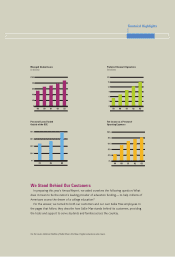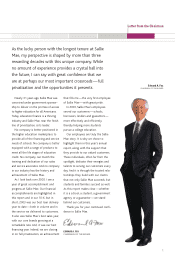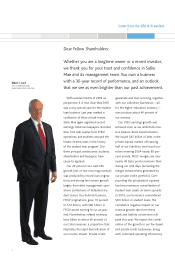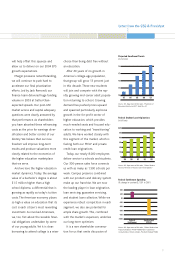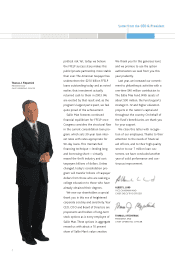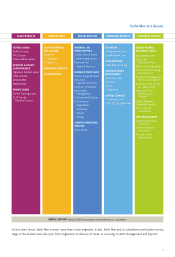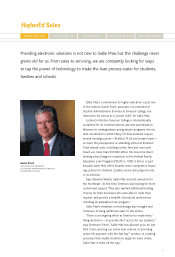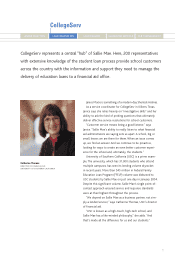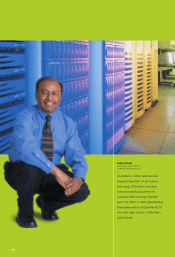Sallie Mae 2003 Annual Report Download - page 5
Download and view the complete annual report
Please find page 5 of the 2003 Sallie Mae annual report below. You can navigate through the pages in the report by either clicking on the pages listed below, or by using the keyword search tool below to find specific information within the annual report.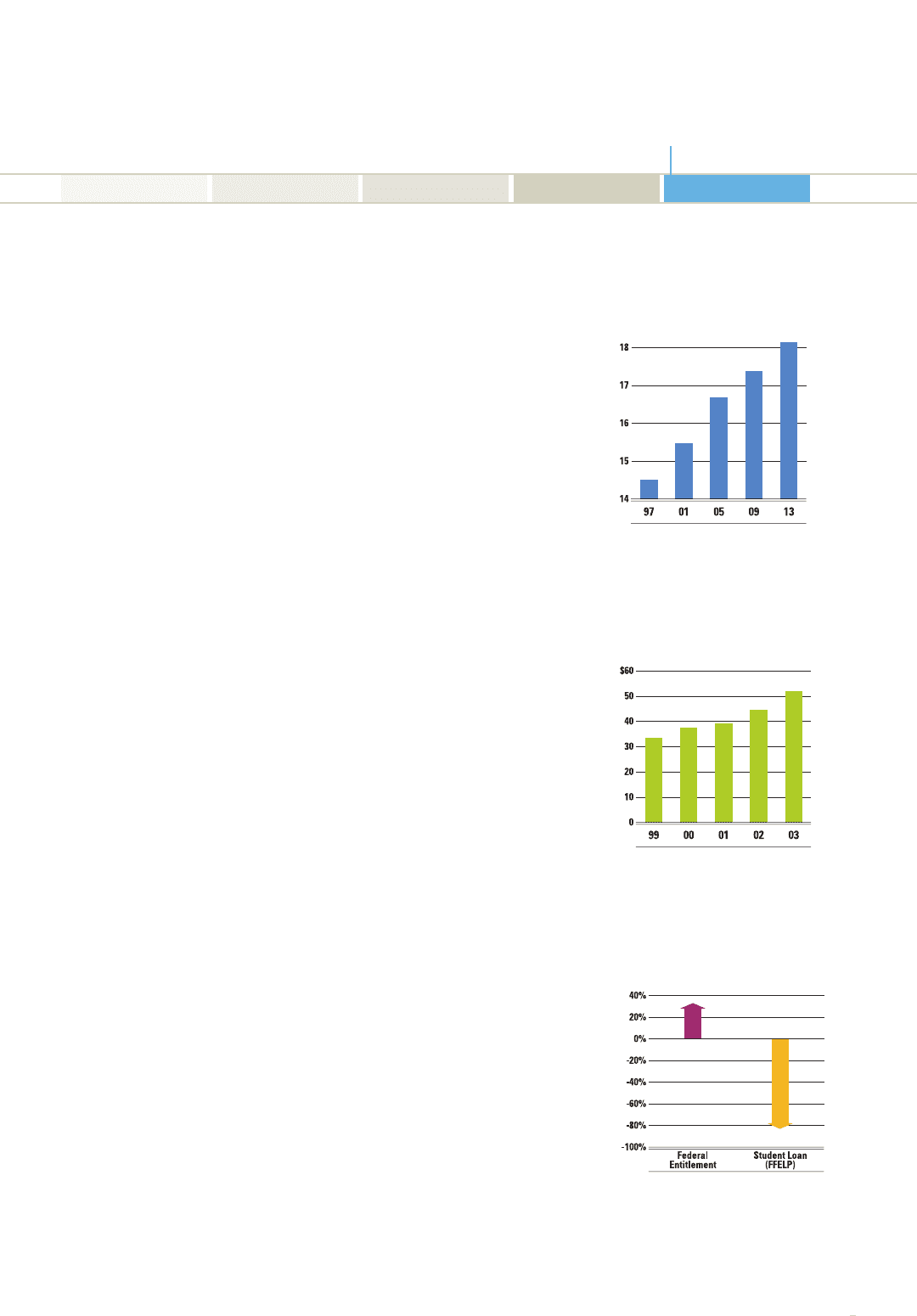
3
Letter from the CEO & President
will help offset this squeeze and
allow us to deliver on our 2004 EPS
growth expectations.
Margin pressures notwithstanding,
we will continue to push hard to
accelerate our final privatization
efforts. Led by Jack Remondi, our
finance team delivered huge funding
volume in 2003 at better-than-
expected spreads. Our post-GSE
market access and capital adequacy
questions were clearly answered by
that performance. As shareholders
you have absorbed these refinancing
costs as the price for earnings diver-
sification and better control of our
destiny. We believe that our new
freedom will improve long-term
results and produce valuations more
closely related to the economics of
the higher education marketplace
that we serve.
And we love the higher education
market dynamics. Today, the average
value of a bachelor’s degree is about
$1.5 million higher than a high
school diploma, a differential that is
growing as rapidly as today’s tuition
costs. The American economy places
so high a value on education that its
cost is each citizen’s most rewarding
investment. As involved Americans,
we, too, fret about the sizeable finan-
cial obligations undertaken by some
of our young adults. Yet it is clear:
borrowing to attend college is a wiser
choice than being debt free without
an education.
After 20 years of no growth in
America’s college-age population,
that group will grow 13 percent just
in this decade. These new students
will join and compete with the rap-
idly growing mid-career adult popula-
tion returning to school. Growing
demand has pushed prices upward
and spawned particularly explosive
growth in the for-profit sector of
higher education, which provides
much-needed seats and focused edu-
cation to working and “transitioning”
adults. We have worked closely with
this segment of the market, which is
fueling both our FFELP and private
credit loan originations.
Today, our nearly 8,000 employees
deliver service to schools and students.
Our 300-person sales force connects
us with as many as 1,500 schools per
week. Campus presence combined
with our products and delivery system
make up our franchise. We are now
the leading player in loan origination,
loan servicing, guarantee servicing,
and student loan collection. While we
experience robust competition in each
segment, we also see potential for
ample share growth. This, combined
with the market’s expansion, underlies
our long-term optimism.
It is a rare shareholder conversa-
tion for us that omits discussion of
Projected Enrollment Trends
(in millions)
Federal Student Loan Originations
(in billions)
Source: U.S. Department of Education, “Projections of
Education Statistics to 2013,” Table 10, p. 57.
Federal Entitlement Spending
(% change in constant $, 1991 to 2001)
Source: U.S. Department of Education, “Federal Student Loan
Program Databook,” FY1997–FY2000, Table 1 adjusted to
constant dollars; Historical Tables, President’s Budget FY2004.
Source: U.S. Department of Education, “Federal Student
Financial Assistance Programs Loan Value Updates.”


